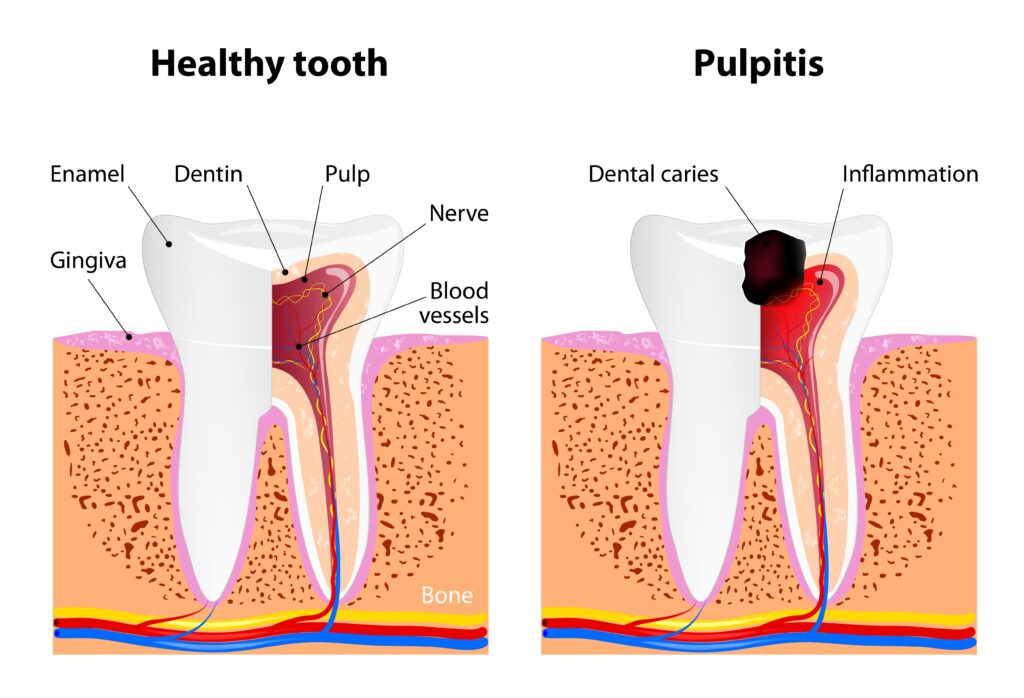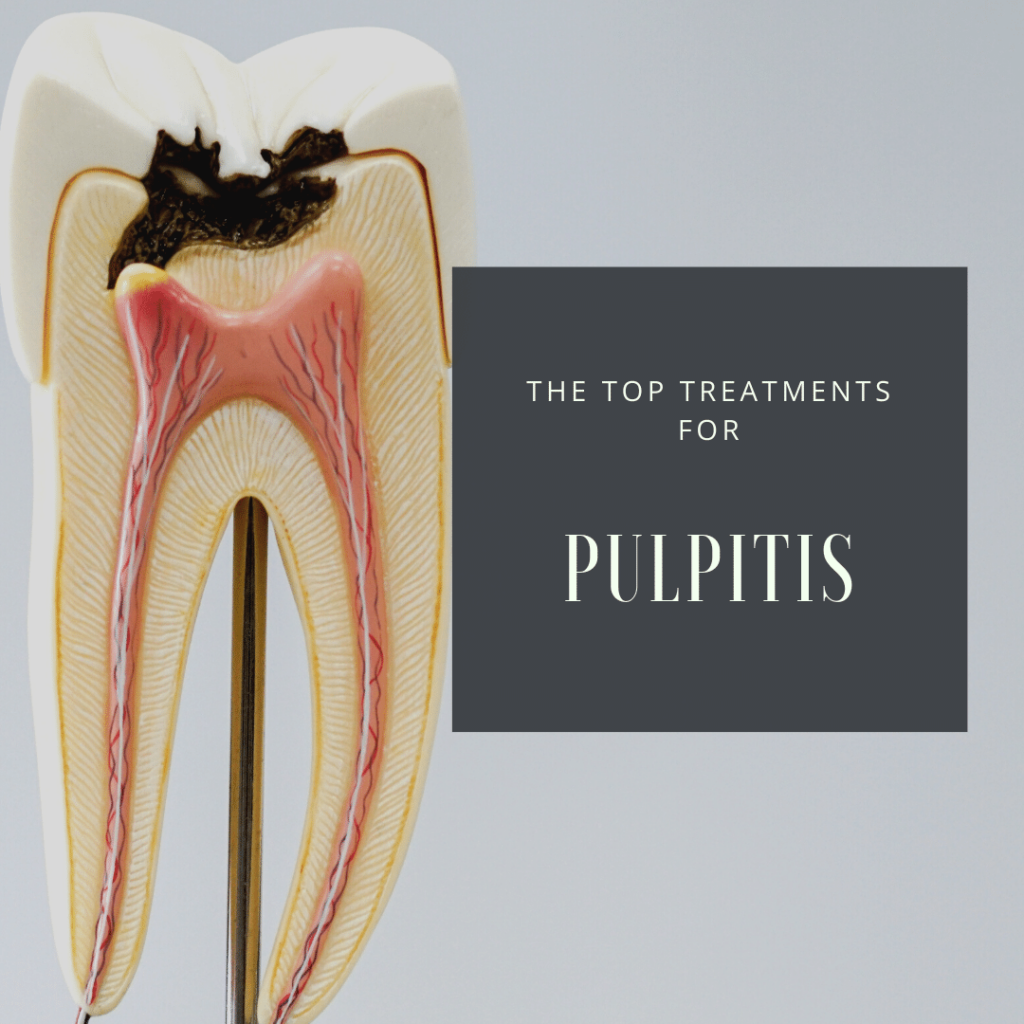If you have been experiencing tooth pain or sensitivity, there is a good chance that you are suffering from pulpitis. Pulpitis is an inflammation of the pulp tissue inside the tooth. It can be caused by a number of factors, such as decay, infection, or trauma. If left untreated, pulpitis can lead to serious health problems. In this blog post, we will discuss more about pulpitis and the top treatments used to treat this condition.

What is pulpitis?
Pulpitis is an inflammation of the pulp tissue inside the tooth. This tissue consists of blood vessels, nerves, and connective tissue. When this tissue becomes inflamed, it can cause a great deal of pain. Pulpitis can be caused by a number of factors, including decay, infection, or trauma.
The most common symptom of pulpitis is tooth pain. This pain can range from mild to severe. Other symptoms may include sensitivity to hot or cold, gum tenderness, and swelling. If you are experiencing any of these symptoms, it is important to see a dentist as soon as possible.
What are the treatments for pulpitis?
The two most common treatments for pulpitis are root canal therapy and dental implants.
Root Canal Therapy
Root canal therapy is a procedure that involves removing the inflamed pulp tissue from the tooth, but leaving the healthy tissue. Once this tissue is removed, the inside of the tooth is then cleaned and sealed to prevent further infection. A dental crown is also placed over the tooth for protection.
Root canals preserve the natural tooth structure and are less expensive than dental implants. They also have a high success rate, and can be performed with little to no discomfort. However, root canals can also fail, which can lead to root canal retreatment or an extraction.
Dental Implants
Dental implants are another option that can be used to treat pulpitis. This option involves extracting the affected tooth and then placing a metal rod into the jawbone to support a replacement tooth.
Dental implants offer a more permanent solution since the infection is completely removed by extracting the tooth. However, they are more expensive and invasive than root canals.
So which treatment should you choose?
The best treatment option for you will depend on several factors, including the severity of your pulpitis and your budget. If you have a mild case of pulpitis, root canal therapy may be the best option. However, if you have a more severe case or your dentist thinks that you are at high risk for root canal failure, then dental implants may be the better choice. Ultimately, you will need to discuss both options with your dentist.
In Conclusion
In this blog post, we have discussed more about pulpitis and the top treatments that are used to treat this condition. Pulpitis can be a painful and serious condition. However, with proper treatment, it can be resolved. If you are experiencing any symptoms of pulpitis, be sure to see a dentist as soon as possible so they can help you make the best decision.

Dr. Admar holds dual certificates — a Bachelor of Dental Surgery (BDS) in 2010 from India and a Doctor of Dental Surgery (DDS) in 2014 from Canada. He is now a full time practicing dentist in Kamloops where he provides a variety of services, including emergency dentistry. Dr. Admar spends hundreds of hours in continued dental education to stay up to date in cosmetic and implant dentistry and he has achieved several advanced qualifications.


